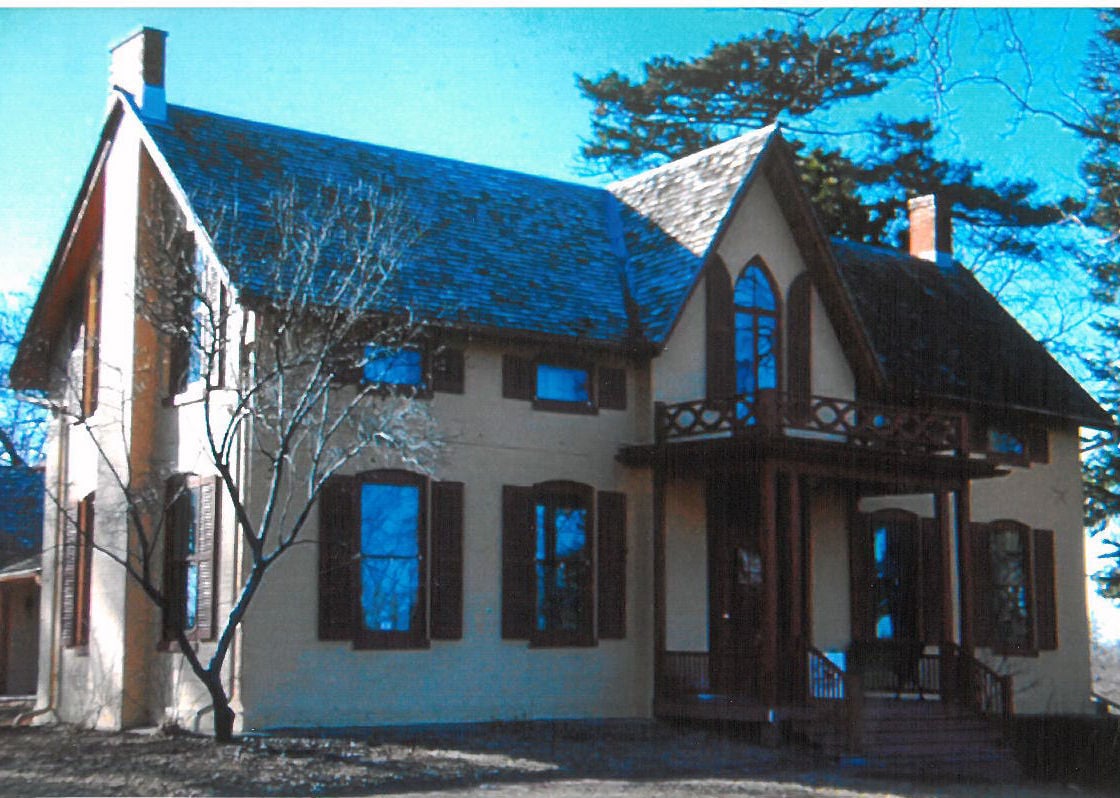Jim McKee: From ‘Wild wood’ to a museum

Nebraska City has a large number of museums as well as the amazing Lied Convention Center, but just a short distance to the center’s south, in the midst of the city’s park and golf complex, lies the Wildwood Center, home of a prominent banker and civic leader.
Jasper Anderson Ware was born in Kentucky in 1831. At the age of 19 he joined his brother Charles in operating a general store located in Trenton but sold his interest in 1857. That May Ware moved to the then two-year-old Nebraska City and took up residence at John McMecham’s Planters Hotel, the second hostelry in the city.
His first recorded purchase was for a quarter section of land just southwest of the city not far from where J. Sterling Morton would construct Arbor Lodge. Although most of Ware’s early business interests centered around real estate and his platted “addition” adjacent to Nebraska City’s northern edge, in 1859 the private or “deposit only” Banking House of J. A. Ware opened as the fifth or sixth bank in Nebraska Territory.
After a major fire wiped out much of the city’s business district, Ware built a new bank described, at the time as “the finest bank building in the territory.” The structure was also the temporary home of Otoe County’s offices while the first portion of a new courthouse was under construction, now noted as the oldest public building still in use in Nebraska and virtually the oldest west of the Missouri River.
In 1864 J. A. Ware was elected city treasurer, a position he would hold until 1867. On May 8, 1864 Ware and others formed the Otoe County National Bank in Nebraska City, the second national bank in Nebraska. A subsidiary bank was established in Omaha at 13th and Farnam as J. A. Ware & Company with P. S. Wilson and others as investors. The Omaha bank was later purchased by former Gov. Alvin Saunders and others becoming the State Bank of Nebraska, the Merchant’s National Bank in 1882 and part of Omaha National Bank in 1926.
When Lincoln became the first capital of the state in 1867 a contest formed around being the first railroad to reach the capital with large state, county and city land grants and bonds as the prize. Ware and a number of Nebraska City businessmen raised $50,000 to form the Midland Pacific Railroad to insure Nebraska City’s retention of a trailhead as well as the land and later cash grants. Track was laid in 1870 and though the prize was won by the Burlington & Missouri River Railroad, the Midland Pacific did reach Lincoln in second place in 1871 with its depot at about Fifth and H streets.
J. A. Ware was defeated as the Democrat candidate for the office of State Treasurer by Nebraska City’s James Sweet in 1868 but was elected a trustee of Nebraska College & Divinity School the same year.
In 1869 Ware built a new home on the 70-acre site he had obtained in 1857. The exact quote varies but supposedly his wife did not like the country location and said she “could not live in such a wild wood” which ultimately was adopted as Wildwood as the house’s name. The 10-room, four-bedroom, 1 ½ story, brick, Gothic Revival mansion had interior walls of load-bearing masonry. The floors were partially parqueted, the wallpaper English Victorian, wainscoting was of solid walnut and featured a unique upper floor with lighting partially furnished by small windows on the second floor in place of the usual dormers.
Unfortunately, a recession in 1870-71 hit the real estate market in Nebraska particularly hard, forcing the closure of Ware’s Nebraska City bank. In order to aid his creditors, Ware put the bulk of his personal assets, about $188,000, in their hands which, though it did not totally compensate them, helped to a considerable extent. Ware retired to Wildwood and though he was made the treasurer of the Nebraska City Board of Education, his outside interests largely ended.
On November 21, 1900 J. A. Ware died at Wildwood. After his widow’s death a number of locals joined together to purchase the house and grounds transferring them to the city’s ownership. In 1968 the mansion was restored, three years later opened as a museum and in 1973 was listed on the National Register of Historic Places.
Today Wildwood Center is one of 12 Nebraska City museums. With a population of about 7,350 that means there is one museum for every 613 citizens. Lincoln, with a population nearing 300,000 would need to have 490 museums to be in the same class as Nebraska City.
Historian Jim McKee, who still writes with a fountain pen, invites comments or questions. Write to him in care of the Journal Star or at jim@leebooksellers.com

